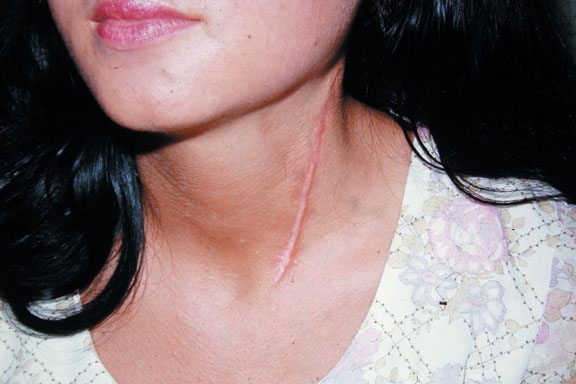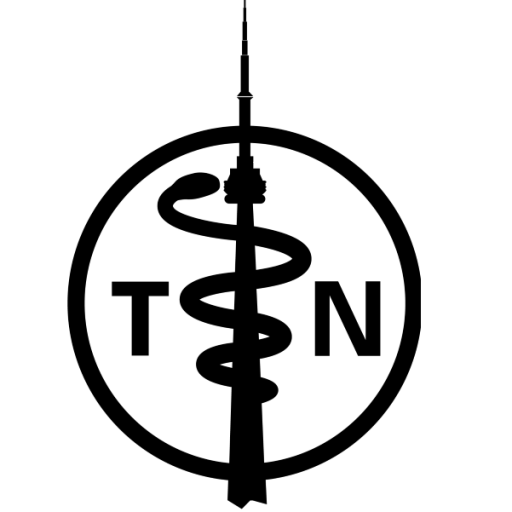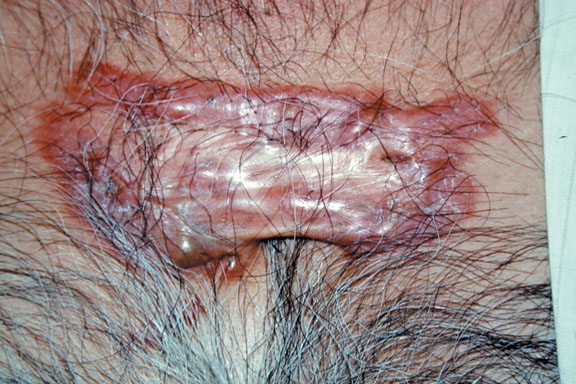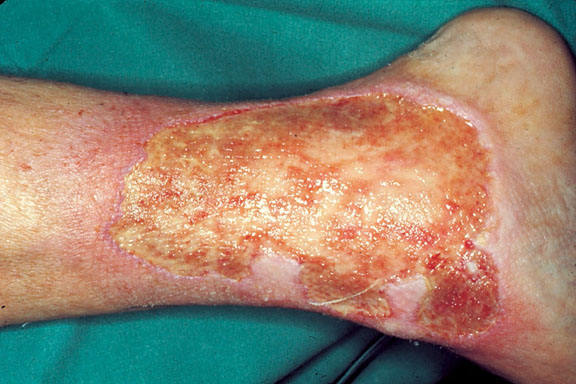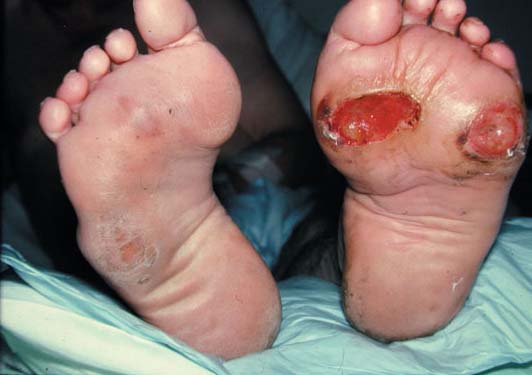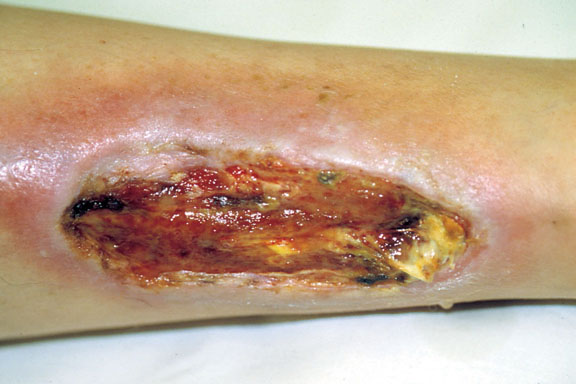Browse by specialty
- Anesthesia and Perioperative
- Cardiology & Cardiovascular System
- Clinical Pharmacology
- Dermatology
- Diagnostic Imaging
- Emergency Medicine
- Endocrinology
- Ethical, Legal, and Organizational Medicine
- Family Medicine
- Gastroenterology
- General Surgery
- Geriatric Medicine
- Gynecology
- Haematology
- Infectious Disease
- Nephrology
- Neurology
- Neurosurgery
- Obstetrics
- Ophthalmology
- Orthopedics
- Otolaryngology
- Pediatrics
- Plastic Surgery
- Population and Community Health
- Psychiatry
- Respirology
- Rheumatology
- Urology
Plastic Surgery
Full-Colour Atlas
Third Degree Burns
(Full Thickness)
Full thickness burn to dorsum of hand. Thrombosed vessels and underlying adipose tissue are clearly visible.
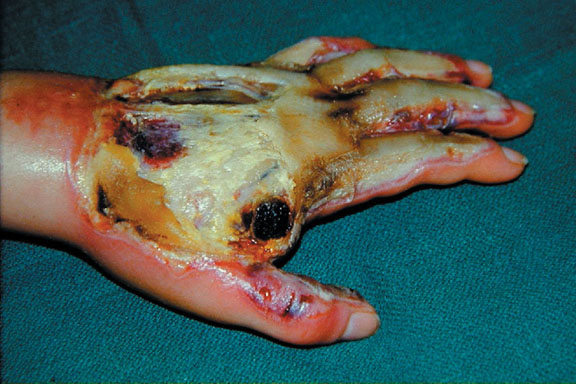
Second Degree Burns
(Deep Partial Thickness)
Deep partial thickness burn to palm. The wound has a wet, variable appearance, with both pale and red areas
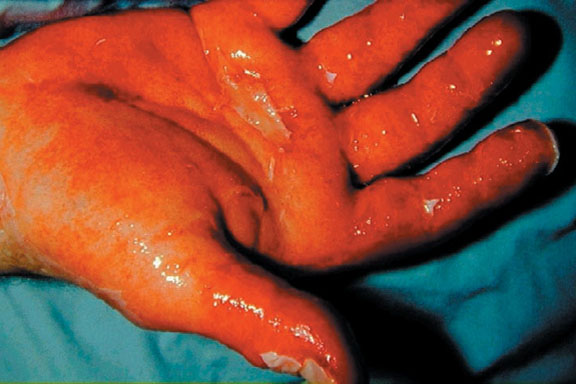
First Degree Burns
(Superficial Partial Thickness)
Superficial partial thickness burn to forearm. Note the presence of unroofed blisters.
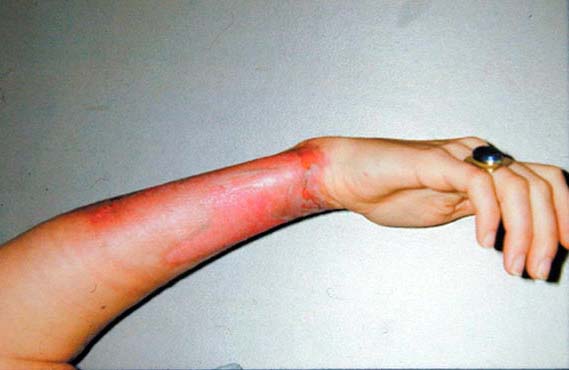
Keloid Scar No. 2
Note the overgrowth of dense fibrous tissues extending beyond the borders of the original injury. (Courtesy of Dr. A. Freiberg)
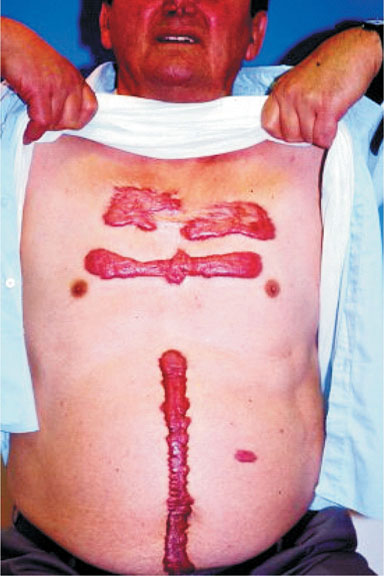
Keloid Scar No. 1
Note the overgrowth of dense fibrous tissues extending beyond the borders of the original injury. (Courtesy of Dr. A. Freiberg)
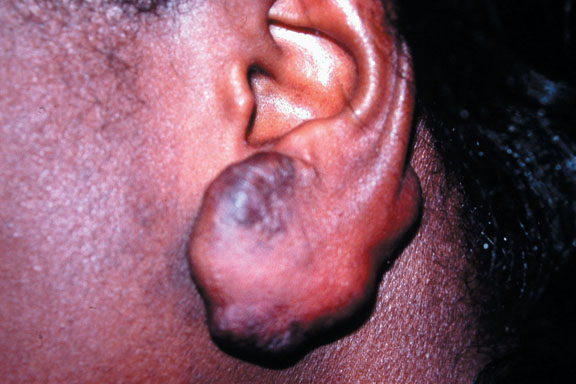
Hypertrophic Scar
Note that hypertrophic scars are limited to the traumatized area and may regress spontaneously, unlike keloid scars. (Courtesy of Dr. A. Freiberg)
